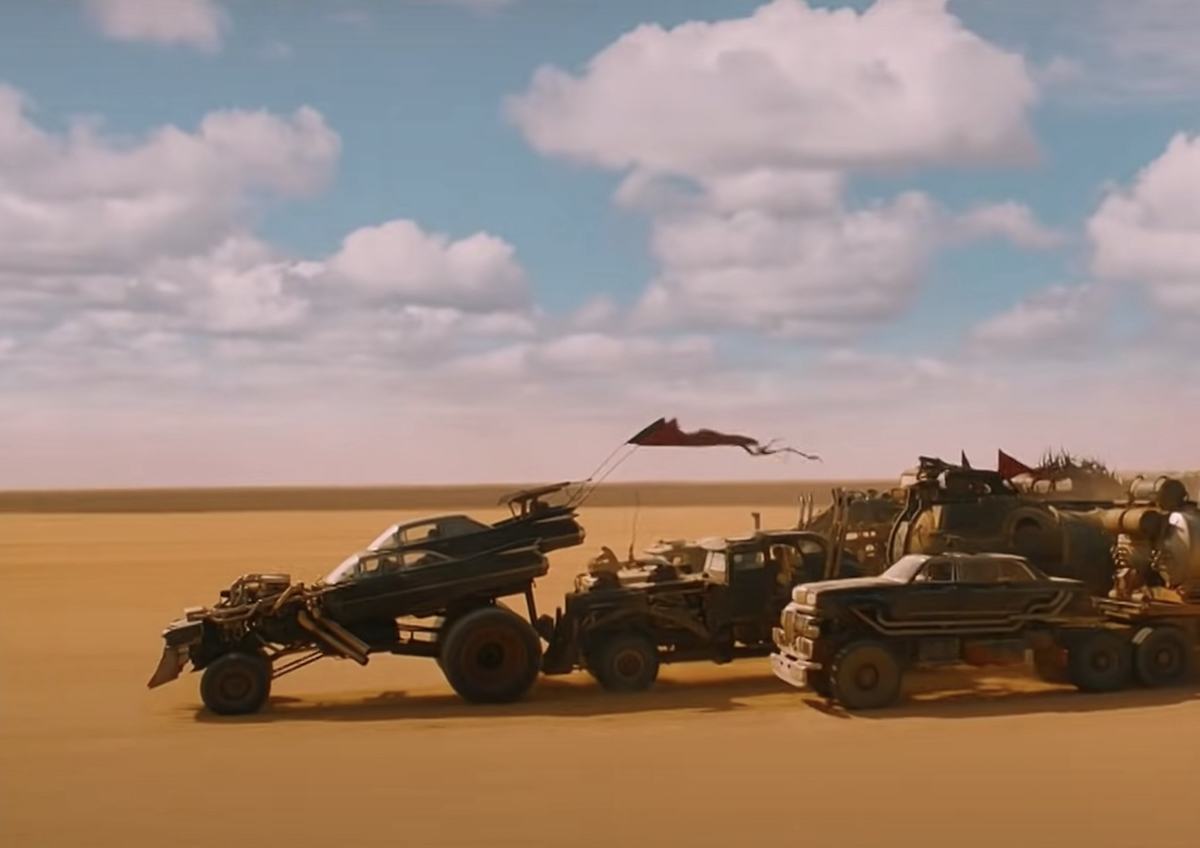‘Mad Max: Fury Road’s Filming Location Was Relocated Namibia Due to an Ironic Problem Created by Climate Change
Mad Max: Fury Road is a miraculous feat of filmmaking. The process of getting this movie to the screen was fraught, to say the least. Fury Road lived in the mind of director George Miller for decades but continually ran into obstacles. Ill-timed production delays combined with the star of the first two movies falling out of favor with the public affected the post-apocalyptic action film’s progress.
Things didn’t get easier after the film was finally greenlit. The stark beauty of Mad Max: Fury Road required shooting in desert environments that weren’t always amenable to the needs of a production crew.
Why does ‘Mad Max: Fury Road’ look so incredible?
The visual style of Mad Max: Fury Road is impressive both as an aesthetic and a medium for storytelling. Look past the stunningly practical car chases and the Doof Warrior playing a flaming guitar. You’ll see a story about what the current environmental crisis might do to humanity.
Despite taking place in a post-apocalyptic hellscape, Fury Road is a vivid movie full of bright colors. According to IMDb, Miller pushed for this on the basis that the characters trying to survive in this setting would hold onto whatever sliver of beauty they could find.
Most of the movie takes place in the daytime. But production shot nighttime scenes in the sun, too. The footage was deliberately overexposed and color-manipulated to execute the vision of the movie. One of the rare instances of CGI in Mad Max: Fury Road involves the skyline. Post-production digitally replaced it with more detailed shots to maintain artistic coherence throughout Fury Road.
Unexpected rain caused the filming location of ‘Mad Max: Fury Road’ to move to Namibia
It took several attempts for Miller to start shooting Mad Max: Fury Road. Production was set to start in 2001 and 2003 before getting stuck in development hell for nearly a decade. Fury Road got the greenlight again in 2011. Miller was set to film in Broken Hill, Australia, a city in the state of New South Wales.
Then another setback occurred. The area experienced heavy rainfall for the first time in years, bringing plant life to the desert. “What was meant to be flat, red earth is now a flower garden,” Miller told BBC News.
Production relocated to the Dorob National Park in Namibia, which forced them to move hundreds of ornate, pre-built vehicles to Africa. The shooting schedule was delayed again after it rained there as well. Deserts famously don’t hold heat well, which led to Riley Keough, one of the “Five Wives,” getting hypothermia while filming.
Strangely enough, this wasn’t the first Mad Max movie to be impacted by surprise weather. Mad Max 2, shot in Broken Hill, suspended production for a week due to rainfall in the area.
Accusations of environmental damage created temporary concerns about the legacy of ‘Mad Max: Fury Road’

Not everyone in Namibia welcomed the arrival of the Mad Max: Fury Road production crew. A fragile ecosystem created the natural beauty that brought Miller and his cast to the country. Endemic species have adapted to the area’s specific climate. The Namib Desert is estimated to be between 50 and 80 million years old. Parts of the desert receive less than half an inch of rain a year. Tire tracks on the desert’s gravel plains can take decades to fully disappear.
The area requires active protection by local environmentalists. Tour guide Tommy Collard accused them of filming in sensitive parts of the Namib Desert, interfering with the wildlife. (A summary of the situation can be found on The World.)”What is worse is the film crew tried to remove the marks they left themselves by dragging nets over them, ripping plants out,” Collard told AFP. “One cannot rehabilitate the landscape of the Namib Desert.”
A leaked draft of an independent environment report also claimed that areas of the desert were damaged and that permission to film in Namib was given before new environmental legislation took effect.
Eventually, the government-run Namibia Film Commission denied that any issues took place after visiting the set. They placed a full-page ad in a local newspaper saying that they had “no reservations” about the production team’s conduct and called the accusations “unjust rhetoric”.


